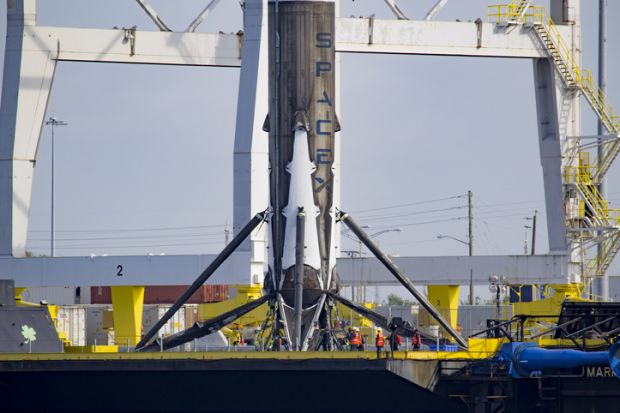Australia’s government has committed billions of dollars towards grand technology projects and commercialisation schemes, but critics say its ambitions risk being undercut by a lack of funding for science education and basic research.
In a federal budget handed down on 29 March, the government promised to spend almost A$1.2 billion (£686 million) on a national space mission for Earth observation – billed as “the most significant investment ever made in Australia’s civil space sector” – and an eye-watering A$9.9 billion on cybersecurity.
The budget papers also commit almost A$400 million to help cultivate low-emission technologies including hydrogen, and to boost power availability through projects like community microgrids.
Hundreds of millions more have been pledged for mRNA manufacturing, critical minerals and marine science. But the Australian Academy of Technology and Engineering (ATSE) said the budget rhetoric risked being undermined by workforce realities.
“There’s a lot of language about the vision of a skilled, technology-powered Australia,” said chief executive Kylie Walker. “They’re using terms like ‘skilling Australians’ and ‘technology not taxes’. All that’s marvellous, but it requires investment in fundamental research and the skills to provide the workforce. That’s the bit we think is missing here.”
ATSE president Hugh Bradlow said Australia would need an additional 100,000 digitally skilled workers by 2024. “By 2025, we need 40,000 more engineers. This is an immediate need that is not being met by support for teachers, students and the higher education sector,” he said.
The budget papers confirm previously announced commitments to foster the translation and commercialisation of research, including a A$500-plus million “accelerator” fund, new research training pathways and a A$150 million equity fund managed by the Commonwealth Scientific and Industrial Research Organisation (CSIRO).
The budget also includes an extra A$37 million for a new CSIRO research translation programme.
But the Australian Academy of Science criticised the lack of additional funding for basic research. “It is disappointing that fundamental science capability is not recognised as the first essential step in the commercialisation effort,” said academy president John Shine.
Some funding commitments also lack clarity, with the cost of dozens of budget pledges – including spending on space projects, critical minerals and mRNA manufacturing – marked “not for publication” due to commercial sensitivities.
Uncertainty also surrounds the research commercialisation commitments, with the budget papers indicating that they will be partially funded “from within the existing resources” of the federal education department.
Science and Technology Australia (STA) said it was “keen to understand” what this meant. “It’s important that we maintain and increase investments in discovery research, which is where the seismic breakthroughs come from,” said chief executive Misha Schubert.
Sources said there was no evidence in the budget papers that money was being withdrawn from other educational activities to pay for research commercialisation. Universities Australia said it understood the initiative would be financed by “new money”.
“The research commercialisation package is almost a billion dollars, and it’s really important,” said chief executive Catriona Jackson. “It’s a real backing of the argument we’ve been making for years – that investment in university research really does pay back in spades.”
The main budget paper also commits almost A$100 million to bankroll more medical degree places in regional Australia, although a “portfolio” statement indicates that only A$11 million will be spent on this measure.
Other pledges include around A$5 million to support science and technology advice to the federal government and A$2 million to extend STA’s “Superstars of STEM” programme, which encourages women to consider careers in science and technology.
But the National Tertiary Education Union said that the budget had “comprehensively failed to deliver anything meaningful for universities, staff or students”, with government funding per student cut by 5.4 per cut in real terms over the next year and 3.6 per cent during the following two years.
“This is certainly not a budget that will benefit the 200,000 people employed in tertiary education nor the 1.6 million students,” said national president Alison Barnes.
Register to continue
Why register?
- Registration is free and only takes a moment
- Once registered, you can read 3 articles a month
- Sign up for our newsletter
Subscribe
Or subscribe for unlimited access to:
- Unlimited access to news, views, insights & reviews
- Digital editions
- Digital access to THE’s university and college rankings analysis
Already registered or a current subscriber? Login









